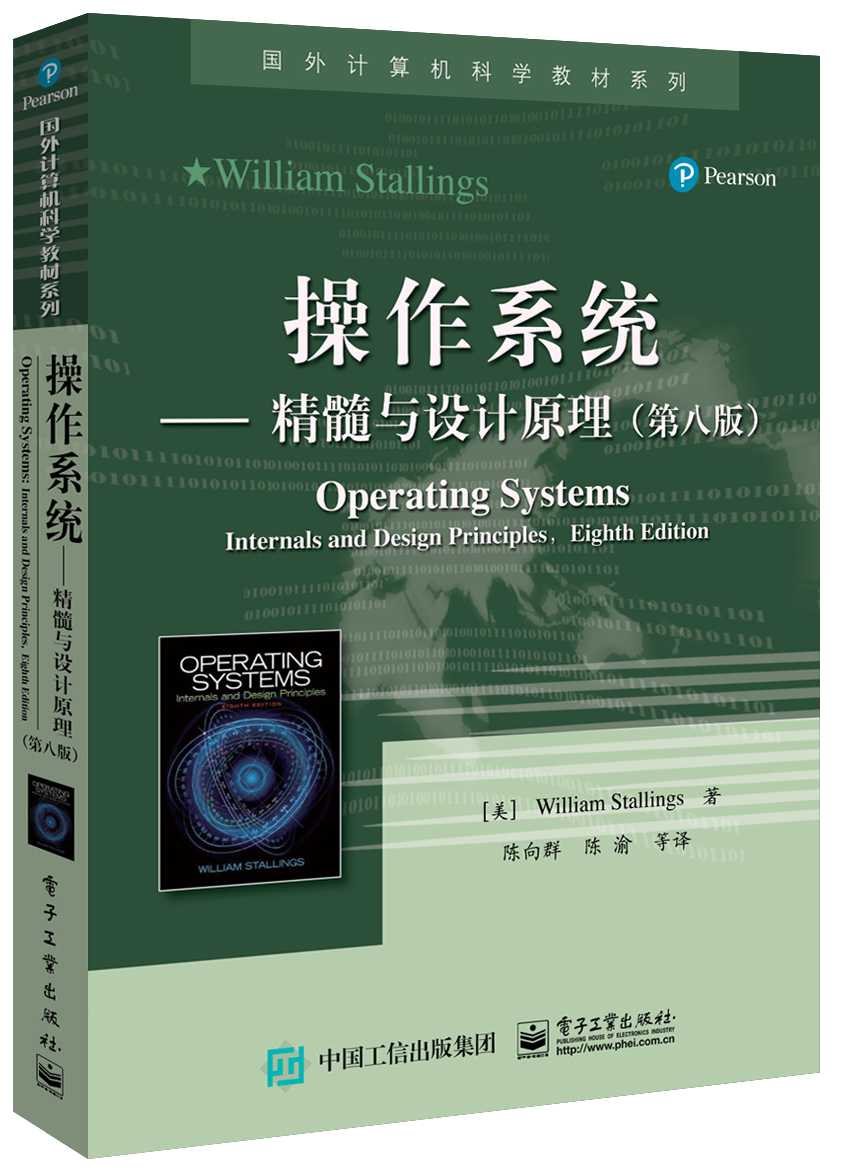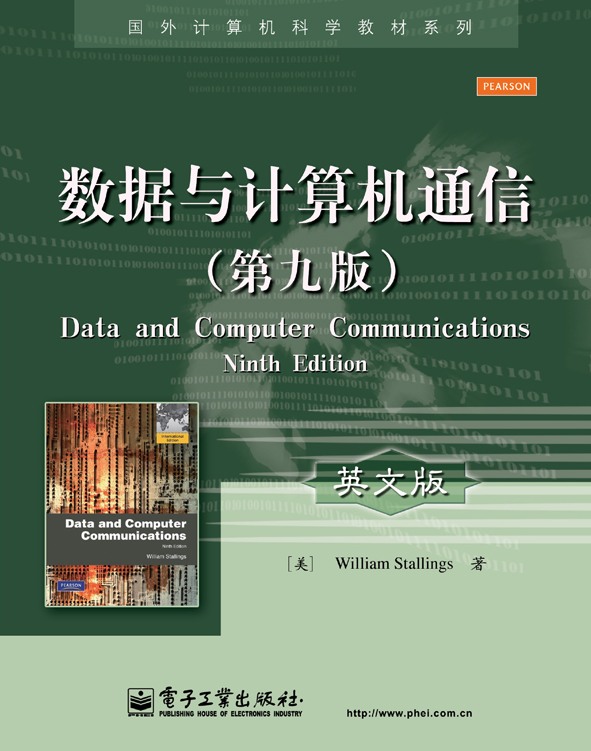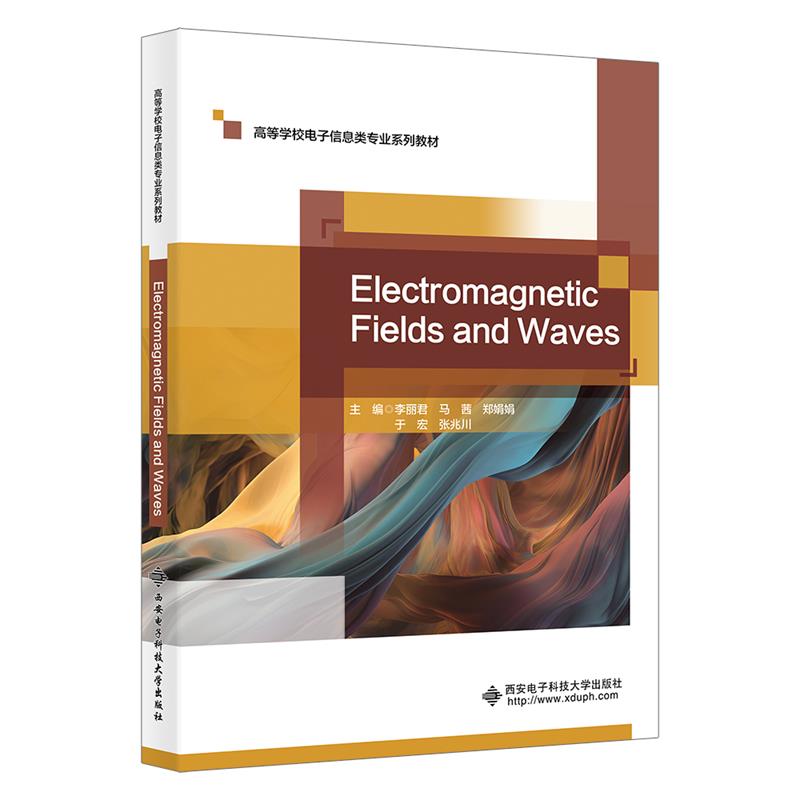- 电子工业出版社
- 9787121217197
- 1-1
- 350484
- 16开
- 2013-11
- 496
- 工程管理(管理学/工学)
- 本科 研究生(硕士、EMBA、MBA、MPA、博士)
内容简介
该书是工程经济学领域的畅销教材,麻省理工学院等数十所美国大学以及英国、韩国、新加坡等很多国家的一些知名院校都将本书作为“工程经济学”课程的最主要教材。
本书系统地介绍了工程经济学的基本原则、基础概念和方法。第15版新增了大量有关绿色工程的案例和思考题,增添了新的电子数据表模型,并提供了大量习题,以让学生能熟练应用理性决策的方法去解决将来职业生涯中可能遇到的实际问题。
本书系统地介绍了工程经济学的基本原则、基础概念和方法。第15版新增了大量有关绿色工程的案例和思考题,增添了新的电子数据表模型,并提供了大量习题,以让学生能熟练应用理性决策的方法去解决将来职业生涯中可能遇到的实际问题。
目录
Chapter 1 Introduction to Engineering Economy(工程经济学概述) 1
1.1 Introduction 1
1.2 The Principles of Engineering Economy 2
1.3 Engineering Economy and the Design Process 5
1.4 Using Spreadsheets in Engineering Economic Analysis 11
1.5 Summary 11
Chapter 2 Cost Concepts and Design Economics(成本概念和设计经济学) 15
2.1 Cost Terminology 15
2.2 The General Economic Environment 21
2.3 Cost-Driven Design(成本驱动设计)Optimization 28
2.4 Present Economy Studies 32
2.5 CASE STUDY—The Economics of Daytime Running Lights 36
2.6 Summary 37
Appendix 2-A Accounting Fundamentals 46
Chapter 3 Cost-Estimation Techniques(成本预测技术) 52
3.1 Introduction 52
3.2 An Integrated Approach 54
3.3 Selected Estimating Techniques (Models) 59
3.4 Parametric Cost Estimating 63
3.5 CASE STUDY—Demanufacturing of Computers 70
3.6 Summary 72
Chapter 4 The Time Value of Money(货币的时间价值) 79
4.1 Introduction 79
4.2 Simple Interest(单利) 80
4.3 Compound Interest(复利) 81
4.4 The Concept of Equivalence(资金有时间价值) 81
4.5 Notation and Cash-Flow Diagrams and Tables 83
4.6 Relating Present and Future Equivalent Values of Single Cash Flows 86
4.7 Relating a Uniform Series (Annuity) to Its Present and Future Equivalent Values 90
4.8 Summary of Interest Formulas and Relationships for Discrete Compounding 97
4.9 Deferred Annuities (Uniform Series) 98
4.10 Equivalence Calculations Involving Multiple Interest Formulas 99
4.11 Uniform (Arithmetic) Gradient of Cash Flows 103
4.12 Geometric Sequences of Cash Flows 107
4.13 Interest Rates that Vary with Time 110
4.14 Nominal and Effective Interest Rates 111
4.15 Compounding More Often than Once per Year 113
4.16 Interest Formulas for Continuous Compounding and Discrete Cash Flows 115
4.17 CASE STUDY—Understanding Economic “Equivalence” 117
4.18 Summary 119
Chapter 5 Evaluating a Single Project(单一项目评估) 136
5.1 Introduction 136
5.2 Determining the Minimum Attractive Rate of Return (MARR) 137
5.3 The Present Worth Method 138
5.4 The Future Worth Method 143
5.5 The Annual Worth Method 144
5.6 The Internal Rate of Return Method 147
5.7 The External Rate of Return Method 154
5.8 The Payback (Payout) Period Method(投资回收期法) 156
5.9 CASE STUDY—A Proposed Capital Investment to Improve Process Yield 157
5.10 Summary 159
Appendix 5-A The Multiple Rate of Return Problem with the IRR Method 171
Chapter 6 Comparison and Selection Among Alternatives(备选方案的比较与选择) 174
6.1 Introduction 174
6.2 Basic Concepts for Comparing Alternatives 175
6.3 The Study (Analysis) Period 178
6.4 Useful lives are Equal to The Study Period 178
6.5 Useful Lives Are Unequal among the Alternatives 191
6.6 Personal Finances 199
6.7 CASE STUDY—Ned and Larry’s Ice Cream Company 202
6.8 Postevaluation of Results 204
6.9 Summary 204
Chapter 7 Depreciation and Income Taxes(折旧与所得税) 223
7.1 Introduction 223
7.2 Depreciation Concepts and Terminology 224
7.3 The Classical (Historical) Depreciation Methods 226
7.4 The Modified Accelerated Cost Recovery System 229
7.5 A Comprehensive Depreciation Example 235
7.6 Introduction to Income Taxes 237
7.7 The Effective (Marginal) Corporate Income Tax Rate 239
7.8 Gain (Loss) on the Disposal of an Asset 242
7.9 General Procedure for Making After-Tax Economic Analyses 242
7.10 Illustration of Computations of ATCFs 245
7.11 Economic Value Added 252
7.12 Summary 254
Chapter 8 Price Changes and Exchange Rates(价格变动与汇率) 266
8.1 Introduction 266
8.2 Terminology and Basic Concepts 267
8.3 Fixed and Responsive Annuities 271
8.4 Differential Price Changes 274
8.5 Spreadsheet Application 276
8.6 Foreign Exchange Rates and Purchasing Power Concepts 277
8.7 CASE STUDY—Selecting Electric Motors to Power an Assembly Line 280
8.8 Summary 282
Chapter 9 Replacement Analysis(重置分析) 293
9.1 Introduction 293
9.2 Reasons for Replacement Analysis 294
9.3 Factors that Must Be Considered in Replacement Studies 294
9.4 Typical Replacement Problems 297
9.5 Determining the Economic Life of a New Asset (Challenger) 299
9.6 Determining the Economic Life of a Defender 301
9.7 Comparisons in Which the Defender’s Useful Life Differs from that of the Challenger 303
9.8 Retirement without Replacement (Abandonment) 305
9.9 After-Tax Replacement Studies 306
9.10 CASE STUDY—Replacement of a Hospital’s Emergency Electrical Supply System 312
9.11 Summary 315
Chapter 10 Evaluating Projects with the Benefit-Cost Ratio Method
(项目评估的收益—成本比率法) 324
10.1 Introduction 324
10.2 Perspective and Terminology for Analyzing Public Projects 325
10.3 Self-Liquidating Projects(自我清算项目) 326
10.4 Multiple-Purpose Projects(多目标项目) 326
10.5 Difficulties in Evaluating Public-Sector Projects 328
10.6 What Interest Rate Should Be Used for Public Projects? 329
10.7 The benefit-Cost Ratio Method 330
10.8 Evaluating Independent Projects by B-C Ratios 335
10.9 Comparison of Mutually Exclusive Projects by B-C Ratios 336
10.10 CASE STUDY—Improving a Railroad Crossing 340
10.11 Summary 341
Chapter 11 Breakeven and Sensitivity Analysis(盈亏平衡与敏感性分析) 349
11.1 Introduction 349
11.2 Breakeven Analysis 350
11.3 Sensitivity Analysis 355
11.4 Multiple Factor Sensitivity Analysis 359
11.5 Summary 361
Chapter 12 Probabilistic Risk Analysis(概率风险分析) 371
12.1 Introduction 371
12.2 Sources of Uncertainty 372
12.3 The Distribution of Random Variables 372
12.4 Evaluation of Projects with Discrete Random Variables 375
12.5 Evaluation of Projects with Continuous Random Variables 381
12.6 Evaluation of Risk and Uncertainty by Monte Carlo Simulation 384
12.7 Performing Monte Carlo Simulation with a Computer 387
12.8 Decision Trees 390
12.9 Real Options Analysis 393
12.10 Summary 396
Chapter 13 The Capital Budgeting Process(资本预算过程) 404
13.1 Introduction 404
13.2 Debt Capital(债务资本) 406
13.3 Equity Capital(权益资本) 407
13.4 The Weighted Average Cost of Capital(WACC,加权平均资本成本) 409
13.5 Project Selection 412
13.6 Postmortem Review 415
13.7 Budgeting of Capital Investments and Management Perspective 416
13.8 Leasing Decisions(租赁决策) 416
13.9 Capital Allocation 418
13.10 Summary 422
Chapter 14 Decision Making Considering Multiattributes(多目标决策) 426
14.1 Introduction 426
14.2 Examples of Multiattribute Decisions 427
14.3 Choice of Attributes 428
14.4 Selection of a Measurement Scale 428
14.5 Dimensionality of the Problem 428
14.6 Noncompensatory Models 429
14.7 Compensatory Models(补偿模型) 432
14.8 Summary 437
Appendix A Using Excel to Solve Engineering Economy Problems
(使用Excel解决工程经济问题) 443
Appendix B Abbreviations and Notation(缩略语和符号) 455
Appendix C Interest and Annuity Tables for Discrete Compounding
(离散复利的利息及年金表) 458
Appendix D Interest and Annuity Tables for Continuous Compounding
(连续复利的利息及年金表) 468
Appendix E Standard Normal Distribution (标准正态分布) 471
Appendix F Selected References(部分参考文献) 473
Appendix G Answers to Selected Problems(部分习题答案) 475
1.1 Introduction 1
1.2 The Principles of Engineering Economy 2
1.3 Engineering Economy and the Design Process 5
1.4 Using Spreadsheets in Engineering Economic Analysis 11
1.5 Summary 11
Chapter 2 Cost Concepts and Design Economics(成本概念和设计经济学) 15
2.1 Cost Terminology 15
2.2 The General Economic Environment 21
2.3 Cost-Driven Design(成本驱动设计)Optimization 28
2.4 Present Economy Studies 32
2.5 CASE STUDY—The Economics of Daytime Running Lights 36
2.6 Summary 37
Appendix 2-A Accounting Fundamentals 46
Chapter 3 Cost-Estimation Techniques(成本预测技术) 52
3.1 Introduction 52
3.2 An Integrated Approach 54
3.3 Selected Estimating Techniques (Models) 59
3.4 Parametric Cost Estimating 63
3.5 CASE STUDY—Demanufacturing of Computers 70
3.6 Summary 72
Chapter 4 The Time Value of Money(货币的时间价值) 79
4.1 Introduction 79
4.2 Simple Interest(单利) 80
4.3 Compound Interest(复利) 81
4.4 The Concept of Equivalence(资金有时间价值) 81
4.5 Notation and Cash-Flow Diagrams and Tables 83
4.6 Relating Present and Future Equivalent Values of Single Cash Flows 86
4.7 Relating a Uniform Series (Annuity) to Its Present and Future Equivalent Values 90
4.8 Summary of Interest Formulas and Relationships for Discrete Compounding 97
4.9 Deferred Annuities (Uniform Series) 98
4.10 Equivalence Calculations Involving Multiple Interest Formulas 99
4.11 Uniform (Arithmetic) Gradient of Cash Flows 103
4.12 Geometric Sequences of Cash Flows 107
4.13 Interest Rates that Vary with Time 110
4.14 Nominal and Effective Interest Rates 111
4.15 Compounding More Often than Once per Year 113
4.16 Interest Formulas for Continuous Compounding and Discrete Cash Flows 115
4.17 CASE STUDY—Understanding Economic “Equivalence” 117
4.18 Summary 119
Chapter 5 Evaluating a Single Project(单一项目评估) 136
5.1 Introduction 136
5.2 Determining the Minimum Attractive Rate of Return (MARR) 137
5.3 The Present Worth Method 138
5.4 The Future Worth Method 143
5.5 The Annual Worth Method 144
5.6 The Internal Rate of Return Method 147
5.7 The External Rate of Return Method 154
5.8 The Payback (Payout) Period Method(投资回收期法) 156
5.9 CASE STUDY—A Proposed Capital Investment to Improve Process Yield 157
5.10 Summary 159
Appendix 5-A The Multiple Rate of Return Problem with the IRR Method 171
Chapter 6 Comparison and Selection Among Alternatives(备选方案的比较与选择) 174
6.1 Introduction 174
6.2 Basic Concepts for Comparing Alternatives 175
6.3 The Study (Analysis) Period 178
6.4 Useful lives are Equal to The Study Period 178
6.5 Useful Lives Are Unequal among the Alternatives 191
6.6 Personal Finances 199
6.7 CASE STUDY—Ned and Larry’s Ice Cream Company 202
6.8 Postevaluation of Results 204
6.9 Summary 204
Chapter 7 Depreciation and Income Taxes(折旧与所得税) 223
7.1 Introduction 223
7.2 Depreciation Concepts and Terminology 224
7.3 The Classical (Historical) Depreciation Methods 226
7.4 The Modified Accelerated Cost Recovery System 229
7.5 A Comprehensive Depreciation Example 235
7.6 Introduction to Income Taxes 237
7.7 The Effective (Marginal) Corporate Income Tax Rate 239
7.8 Gain (Loss) on the Disposal of an Asset 242
7.9 General Procedure for Making After-Tax Economic Analyses 242
7.10 Illustration of Computations of ATCFs 245
7.11 Economic Value Added 252
7.12 Summary 254
Chapter 8 Price Changes and Exchange Rates(价格变动与汇率) 266
8.1 Introduction 266
8.2 Terminology and Basic Concepts 267
8.3 Fixed and Responsive Annuities 271
8.4 Differential Price Changes 274
8.5 Spreadsheet Application 276
8.6 Foreign Exchange Rates and Purchasing Power Concepts 277
8.7 CASE STUDY—Selecting Electric Motors to Power an Assembly Line 280
8.8 Summary 282
Chapter 9 Replacement Analysis(重置分析) 293
9.1 Introduction 293
9.2 Reasons for Replacement Analysis 294
9.3 Factors that Must Be Considered in Replacement Studies 294
9.4 Typical Replacement Problems 297
9.5 Determining the Economic Life of a New Asset (Challenger) 299
9.6 Determining the Economic Life of a Defender 301
9.7 Comparisons in Which the Defender’s Useful Life Differs from that of the Challenger 303
9.8 Retirement without Replacement (Abandonment) 305
9.9 After-Tax Replacement Studies 306
9.10 CASE STUDY—Replacement of a Hospital’s Emergency Electrical Supply System 312
9.11 Summary 315
Chapter 10 Evaluating Projects with the Benefit-Cost Ratio Method
(项目评估的收益—成本比率法) 324
10.1 Introduction 324
10.2 Perspective and Terminology for Analyzing Public Projects 325
10.3 Self-Liquidating Projects(自我清算项目) 326
10.4 Multiple-Purpose Projects(多目标项目) 326
10.5 Difficulties in Evaluating Public-Sector Projects 328
10.6 What Interest Rate Should Be Used for Public Projects? 329
10.7 The benefit-Cost Ratio Method 330
10.8 Evaluating Independent Projects by B-C Ratios 335
10.9 Comparison of Mutually Exclusive Projects by B-C Ratios 336
10.10 CASE STUDY—Improving a Railroad Crossing 340
10.11 Summary 341
Chapter 11 Breakeven and Sensitivity Analysis(盈亏平衡与敏感性分析) 349
11.1 Introduction 349
11.2 Breakeven Analysis 350
11.3 Sensitivity Analysis 355
11.4 Multiple Factor Sensitivity Analysis 359
11.5 Summary 361
Chapter 12 Probabilistic Risk Analysis(概率风险分析) 371
12.1 Introduction 371
12.2 Sources of Uncertainty 372
12.3 The Distribution of Random Variables 372
12.4 Evaluation of Projects with Discrete Random Variables 375
12.5 Evaluation of Projects with Continuous Random Variables 381
12.6 Evaluation of Risk and Uncertainty by Monte Carlo Simulation 384
12.7 Performing Monte Carlo Simulation with a Computer 387
12.8 Decision Trees 390
12.9 Real Options Analysis 393
12.10 Summary 396
Chapter 13 The Capital Budgeting Process(资本预算过程) 404
13.1 Introduction 404
13.2 Debt Capital(债务资本) 406
13.3 Equity Capital(权益资本) 407
13.4 The Weighted Average Cost of Capital(WACC,加权平均资本成本) 409
13.5 Project Selection 412
13.6 Postmortem Review 415
13.7 Budgeting of Capital Investments and Management Perspective 416
13.8 Leasing Decisions(租赁决策) 416
13.9 Capital Allocation 418
13.10 Summary 422
Chapter 14 Decision Making Considering Multiattributes(多目标决策) 426
14.1 Introduction 426
14.2 Examples of Multiattribute Decisions 427
14.3 Choice of Attributes 428
14.4 Selection of a Measurement Scale 428
14.5 Dimensionality of the Problem 428
14.6 Noncompensatory Models 429
14.7 Compensatory Models(补偿模型) 432
14.8 Summary 437
Appendix A Using Excel to Solve Engineering Economy Problems
(使用Excel解决工程经济问题) 443
Appendix B Abbreviations and Notation(缩略语和符号) 455
Appendix C Interest and Annuity Tables for Discrete Compounding
(离散复利的利息及年金表) 458
Appendix D Interest and Annuity Tables for Continuous Compounding
(连续复利的利息及年金表) 468
Appendix E Standard Normal Distribution (标准正态分布) 471
Appendix F Selected References(部分参考文献) 473
Appendix G Answers to Selected Problems(部分习题答案) 475










